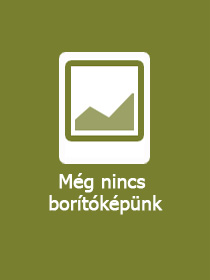
| ISBN13: | 9781032704951 |
| ISBN10: | 10327049511 |
| Kötéstípus: | Keménykötés |
| Terjedelem: | 198 oldal |
| Méret: | 234x156 mm |
| Súly: | 526 g |
| Nyelv: | angol |
| Illusztrációk: | 24 Illustrations, black & white; 24 Halftones, black & white; 8 Tables, black & white |
| 698 |
Digital Transitioning in the Built Environment of Developing Countries
GBP 165.00
Kattintson ide a feliratkozáshoz
A Prosperónál jelenleg nincsen raktáron.
This book serves as a helpful guide for anyone interested in understanding and implementing Building Information Modeling (BIM) in developing countries. It focuses on the construction industry and how digital technologies can improve the way buildings and infrastructure projects are planned, designed, and built.
This book serves as a helpful guide for anyone interested in understanding and implementing Building Information Modelling (BIM) in developing countries. It focuses on the construction industry and how digital technologies can improve the way buildings and infrastructure projects are planned, designed, and built. The book starts by explaining what BIM is and why it's important. It then explores the challenges that developing countries face when adopting BIM, such as limited resources and lack of infrastructure. The authors provide practical solutions to overcome these challenges based on real-world examples and case studies. The book takes readers through a step-by-step process to create a roadmap for BIM adoption. It helps readers understand the necessary steps and strategies involved, such as setting clear goals, involving all relevant stakeholders, and managing changes in the way things are done.
One of the book's unique features is that it focuses specifically on the needs and circumstances of developing countries. It recognises that these countries have different challenges compared to more developed nations. By addressing these specific challenges, the book provides tailored advice that readers can apply in their own contexts. The book also emphasises the need for training and capacity building. It acknowledges that many professionals in developing countries may not have the necessary skills and knowledge to fully utilise BIM. Therefore, it introduces an approach called the dynamic capacity model, which helps ensure that people receive the training they need to successfully implement BIM. Overall, this book is a practical and accessible resource for anyone interested in implementing BIM in the construction industry of a developing country. It is important reading for professionals and academics in construction management, engineering, architecture, infrastructure development, urban planning, and governance in developing nations.
Chapter 1-Introduction
Chapter 2- Digital Transitioning
Chapter 3- Building information modelling: A digitalisation platform
Chapter 4- Technology Adoption: BIM & Digital Twin Technologies
Chapter 5- Organisational Digital Workflows Towards Digital Transitioning
Chapter 6- Common data environment (CDE): Key to collaboration digital transitioning in the construction industry
Chapter 7- The critical role of data quality and Standards in the construction industry towards digital transformation
Chapter 8- Digital Transitioning Maturity and Digitalisation Impediments
Chapter 9- Digital Transitioning Implementation Roadmaps
Chapter 10- Recommendation and Implication






